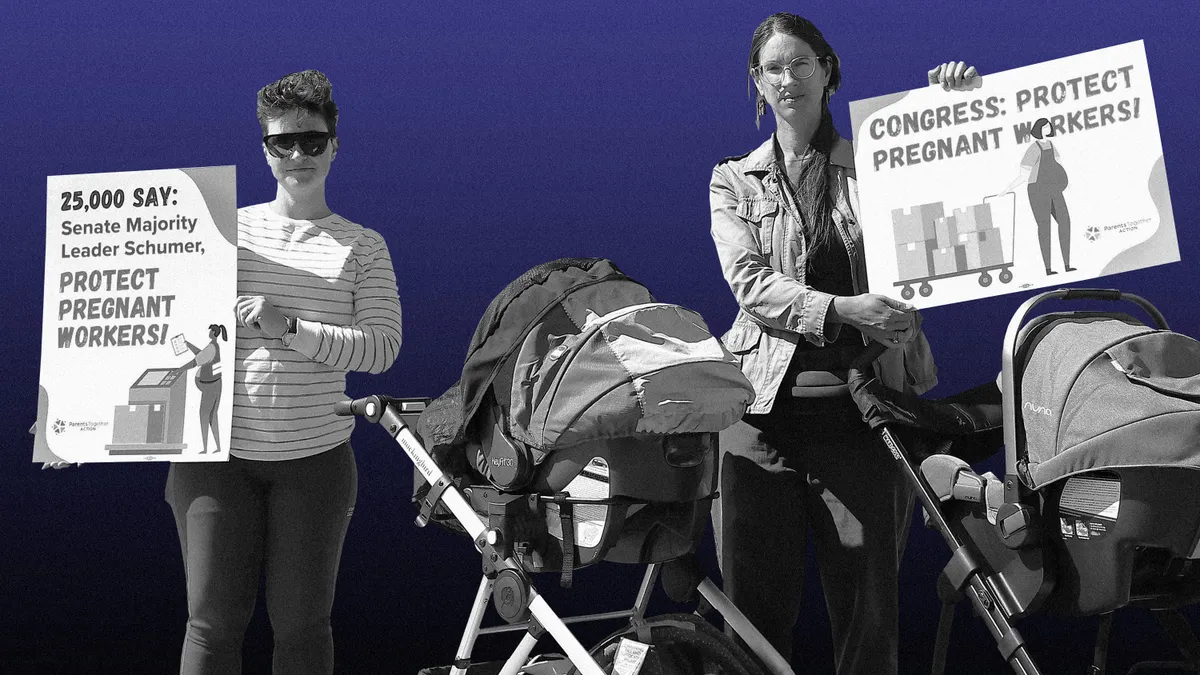The Pregnant Workers Fairness Act, which is set to take hold June 2023 and was signed into law in December 2022, has a few areas of overlap with the Americans with Disabilities Act. As Feb. 5, 2023, marked 30 years of the Family and Medical Leave Act, the anniversary brings to mind some critical compliance questions: How does the PWFA protect pregnant workers and how do those accommodations stack up to the FMLA?
Ashley Brightwell, a partner in Alston and Bird’s Labor and Employment Group, spoke to HR Dive in retrospect about the FMLA’s importance. “It was the first time that we had a protected leave of absence in our country,” Brightwell notes, emphasizing newfound coverage for those who were experiencing serious health conditions, those embracing the birth, adoption or fostering of children, or those supporting loved ones on caregiving journeys. “It was pretty revolutionary once it was enacted.”
Both the FMLA and the PWFA can address childbirth, preparations therein and caregiving afterward. But where the FMLA grants workers 12 weeks of unpaid but job-protected leave, the PWFA provides on-the-job accommodations for workers. This legislation elevates the conditions of pregnancy — including morning sickness and preeclampsia — to ADA-covered disability status.
The 1993 leave act and the 2023 fairness act can work together in tandem. The FMLA remains as a during- and after-birth option for talent, Brightwell explained.
HR Dive reached out to the EEOC for comment regarding the Pregnant Workers Fairness Act, but did not hear back by the time of publication.
An employment law attorney illustrated how chairs or stools, additional break time, and snacks (especially in workplaces that normally maintain “clean desk” policies) can provide significant support to pregnant people. As is the case with the ADA, HR managers should seek to meet all of their talent’s needs, unless it would cause “undue hardship” on the organization. The attorney who spoke to HR Dive previously on the PWFA emphasized that managers should use leave as a last-resort accommodation — not the first line of defense.
As outlined in the EEOC’s document for the PWFA, further guidance for the act should be rolled out this year.














